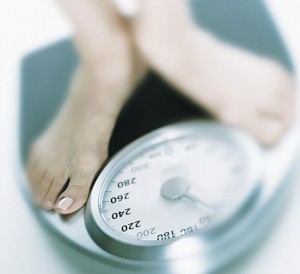Losing pregnancy weight fast is an expectation for many new mothers. The truth is actually more complex. Childbearing changes the body in several ways and there remains a biological need for the added weight. The slow development of human babies means breastfeeding can continue for several years after birth. Breastfeeding is most intense during the first six months, and lingering postpartum weight is there to support this.
Some women decide to forgo breastfeeding in favor of crash dieting. This is counter-productive to the long-term health of mom and baby. In fact, breastfeeding is proven to burn 500-600 calories a day for new moms. Combined with postnatal exercises and healthy eating habits, breastfeeding can help mom get as close as possible to her pre-pregnancy figure.
Before starting a new weight-loss or exercise program, a woman should speak to her doctor. Just as her doctor provided information and education during pregnancy about subjects like pain management choices, umbilical cord blood banking and immunizations, the doctor can provide guidance and answer questions about exercises that are safe and effective for weight loss.
Safe and Effective Postpartum Exercises
The first step is assessing your fitness level and complicating factors. Were there complications during delivery? An episiotomy or Cesarean delivery will both take time to heal. Some women will recover in a matter of weeks and others may need months. It partly depends on how well the procedure was performed, but much of recovery is directly related to good nutrition and targeted exercises.
Some of the same pelvic floor exercises taught in pregnancy classes will be useful in recovering from complicated delivery. Abdominal exercises should be performed in stages to progressively work muscle from the deepest layer to the surface. The increased blood flow will speed healing.
- The first stomach exercise is a modified breathing pattern. Try doing it from a sitting position first, and change to either standing or lying on your back, if this causes distress. Breathe in with the diaphragm allowing the ribcage to remain motionless while the belly expands. After four counts of breathing in, hold the breath for four seconds. Release the breath over four seconds and allow a four second rest before breathing in again.
- After belly breathing several times, you are ready to work the deepest muscle layer of the lower abdomen. On exhale, sink the stomach toward the spine as far as it will go. This will push the diaphragm up. Hold this for ten seconds while breathing lightly into the upper lungs. Avoid engaging the straightened spine or back muscles.
- Next, you can try modified crunches. Lay on your back with hands on the thighs and shoulder blades flat on the floor. Breathe through the abdomen for a moment and begin the exercise on an exhale. Slide your hands toward the knees, and allow your head and shoulder blades to follow. Avoid reaching as this will move the shoulder blades from their fixed position. Return slowly to the floor on an inhale.
Exercise can dramatically speed the recovery process. It will also be worthwhile to engage in a routine to strengthen the arms. Isometric and isotonic exercises can be used safely with no equipment anywhere to target specific muscles. Increasing lean muscle is the key to strengthening the metabolism for natural weight loss.
“Katie Moore has written and submitted this article. Katie is an active blogger who discusses the topics of, motherhood, children, fitness, health and all other things Mommy. She enjoys writing, blogging, and meeting new people! To connect with Katie contact her via her blog, Moore From Katie or her twitter, @moorekm26.”
